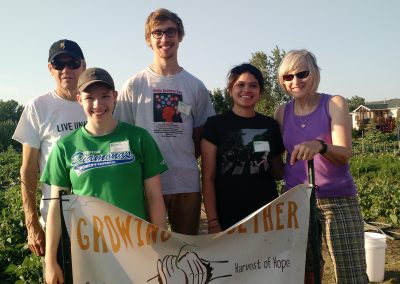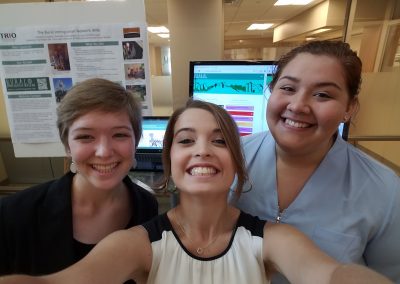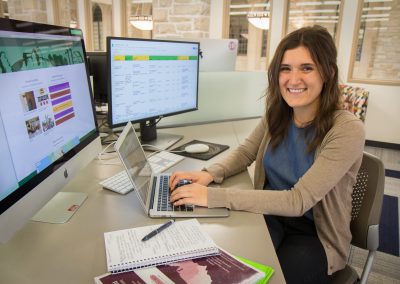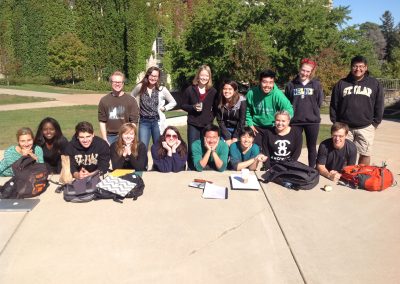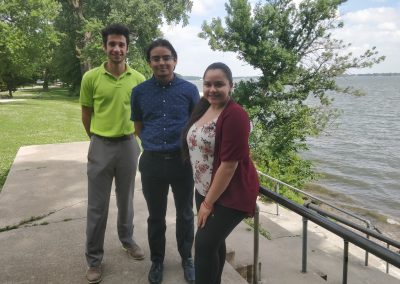What is the Rural Immigration Network (RIN)?
RIN shares good ideas and practical information aimed at building community among immigrants and longer-term residents in rural America.
Why RIN?
Our heated national political arguments about immigration policy too often obscure good people’s efforts to recognize others’ humanity as individuals, families, and neighbors. Rural towns can be great places to foster welcoming relationships. Drawing newcomers into local life takes effort, especially when residents differ in their cultural, ethnic, and linguistic backgrounds. Local groups and organizations shape changing communities when they offer language classes, create employment opportunities, provide chances to learn about all residents’ cultures, and guide children to success in school. Density in big cities allows community-engaged people to brainstorm with each other and trade ideas easily. Rural leaders know their local partners well, but distance can separate them from opportunities to gather fresh ideas from those outside their immediate circle. RIN allows community builders to learn from others like themselves, creating an online network that stretches across geographic distances and highlights efforts to empower and support immigrant newcomers in rural areas.
Who is RIN for?
We want RIN to serve advocates, teachers, health care providers, community event planners, employers, volunteers, public officials—in short, the organized groups and individual leaders who make rural communities good places to live for all residents. We hope you use RIN to find inspiration, learn more about specific topics relevant to your organization’s work, and to connect with other organizations for direct networking.
RIN does not offer direct services or advice to individuals, nor does it engage in partisan advocacy or activities.
What is "rural"?
What do we mean by “rural”? Different people use the word to express their own ideas and experiences. We can also look to statistics to find an answer. For example, the federal government identifies (see link here) several different types of population areas. Metropolitan areas have populations greater than 50,000; micropolitan areas have populations between 10,000 and 50,000. They designate a third type as rural: those neither metropolitan, micropolitan, or connected to the prior two by commuting patterns. RIN targets micropolitan and nonmetropolitan areas because community builders within these areas experience a geographic spread from others like themselves when seeking to exchange new ideas about immigrant incorporation. We acknowledge several exceptions (for example, Fargo, ND which is technically “metropolitan”) present on the website, yet have chosen to include them on a case-by-case basis to best align with our goals of sharing information from beyond the major population centers in the United States.
What can I learn through RIN?
Recipes for Action, the core of RIN, share good ideas for and from local community builders. Recipes feature activities, events, and programs underway in rural towns. Recipes most often focus on an organization’s specific project or initiative, but Recipes occasionally overview the entire organization and briefly describe its various initiatives. By reporting through a recipe-style format that lists necessary resources, desired outcomes, and things to remember when starting new projects, we invite you to customize them to suit your own needs and tastes.
RIN also shares helpful research published by social scientists through three types of short, clearly-organized essays. We report on useful expert findings, including links to our sources so you can read in more depth if you would like.
Foundations offer background reports suitable for sharing at new staff-training sessions, community discussions, and other forums where people seek introductions to ways in which immigration matters in the rural United States. Foundations essays explore academic and public debates, and the relationship between them.
Briefs highlight more specific findings than Foundations that service providers and community organizations can put to use quickly. In addition to summarizing research-based insights, briefs report continuing debates among scholars.
Calls for Research (CFRs) introduce topics where public debates and practice reveal the need for more evidence to guide activities. As with Briefs, CFRs highlight findings and conclusions useful to practitioners, but point out where we need to know more.
ArcGIS StoryMaps synthesize and create a narrative about publicly available information regarding immigrant incorporation in rural communities across the U.S. This interactive program manages maps with multimedia content such as text, images, audio, and video.
The Table of Contents (TOC) Master Map illustrates the geographic spread of Recipes for Action, scholarship, and Story Maps relating to immigrant incorporation. You can use this consolidated map to browse ideas from experts, educators, healthcare professionals, and others who are welcoming new neighbors into their community. You can also use the search bar tool to access the spreadsheet behind the map.
Who is RIN?
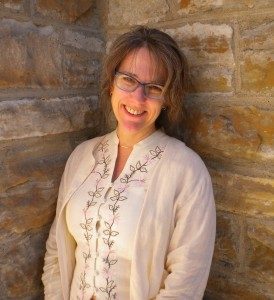 Katherine Tegtmeyer Pak, Associate Professor of Political Science and Asian Studies at St Olaf College, created RIN in 2014. She began using community-based research practices (CBRP) with students in her Immigration & Citizenship Seminar to cooperate with local Rice County, MN community organizations in 2008. Over several years of conversations about such projects, she realized that community partners could use her students’ writing to trade good ideas with other leaders doing similar work. At the same time, she learned how much partners appreciate student-written reports about social science evidence related to immigration and diversity. She began building a network of faculty and student collaborators dedicated to writing in ways that might foster a useful network of rural community-builders.
Katherine Tegtmeyer Pak, Associate Professor of Political Science and Asian Studies at St Olaf College, created RIN in 2014. She began using community-based research practices (CBRP) with students in her Immigration & Citizenship Seminar to cooperate with local Rice County, MN community organizations in 2008. Over several years of conversations about such projects, she realized that community partners could use her students’ writing to trade good ideas with other leaders doing similar work. At the same time, she learned how much partners appreciate student-written reports about social science evidence related to immigration and diversity. She began building a network of faculty and student collaborators dedicated to writing in ways that might foster a useful network of rural community-builders.
RIN today shares writing from students in Kathy’s political science seminar and in St. Olaf’s CURI (Collaborative Undergraduate Research & Inquiry) summer research program. Faculty and students at neighboring Carleton College also contribute to RIN thanks to support from the St. Olaf Academic Civic Engagement (ACE) program, the Carleton College Center for Community and Civic Engagement, and a Broadening the Bridge grant.
